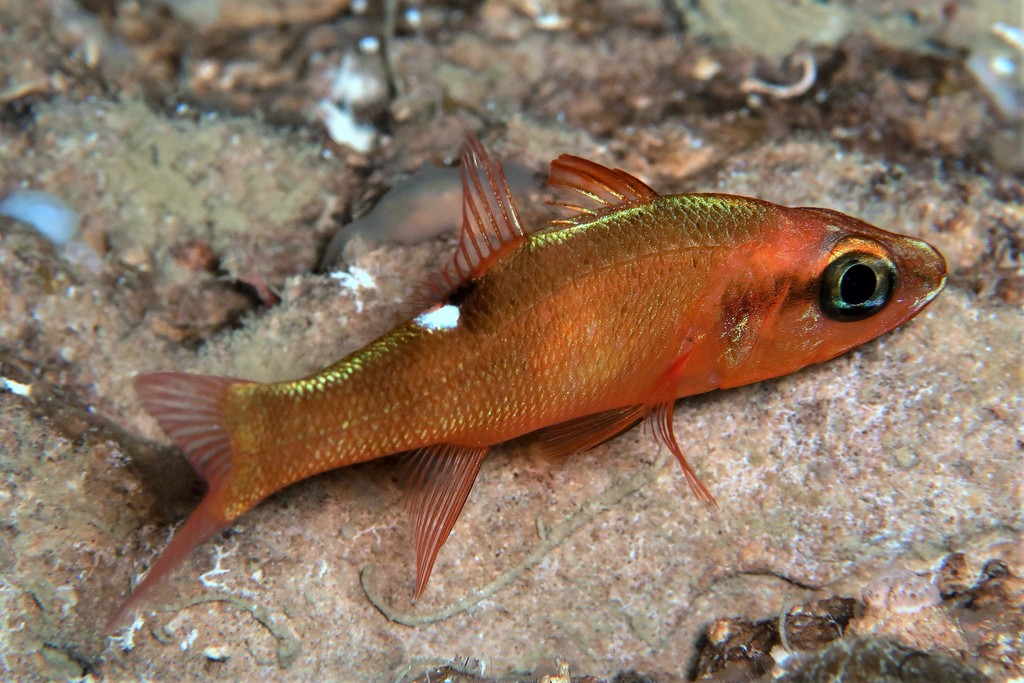ZAPOGON EVERMANNI (JORDAN & SNYDER, 1904)
Picture courtesy of: Alain Daoulas
Actinopterygii (Gigaclass) > Actinopteri (Class) > Teleostei (Subclass) > Kurtiformes (Order) > Apogonidae (Family) > Apogoninae (Subfamily) > Zapogon (Genus)
Cave cardinalfish, Cave cardinal, Evermann's cardinalfish, Oddscale cardinalfish, Tomari hiiro tenjikudai, トマリヒイロテンジクダイ, 埃氏天竺鯛,
Synonymes
Amia evermanni (Jordan & Snyder, 1904)
Apogon anisolepis (Böhlke & Randall, 1968)
Apogon evermanni (Jordan & Snyder, 1904)
-------------------------
Description
Dorsal spines (total): 7; Dorsal soft rays (total): 9; Anal spines: 2; Anal soft rays: 8; Pectoral fin rays: 12; Lateral line scales: 24, large, well spaced; Remaining scales of body small: 45-48 in longitudinal series. Body elongate. Gill rakers: 19-23; Circumpeduncular scales: 25-35. Small ctenoid scales; Caudal peduncle long. Max. length: 15.0 cm TL Depth range: 3 - 250 m.
Color
Body yellow or reddish brown. Head, body and fin rays reddish; Snout with reddish brown stripe extending onto opercle; Blackish spot below rear third of dorsal fin rays, followed by whitish spot; Faint bars may be present on midbody, below whitish spot, and on peduncle.
Etymology
Zapogon: from Greek, za = very + from Greek, a = without + from Greek, pogon = chin, beard. Referring to its “very similar” appearance to Apogon.
evermanni: in honor of American ichthyologist Barton Warren Evermann (1853-1932), United States Bureau of Fisheries.
Original description: Apogon evermanni Jordan & Snyder, 1904 - Type locality: Honolulu market, Oahu Island, Hawaiian Islands.
Distribution
Circumglobal in tropical and subtropical seas, but not reported in Red Sea or eastern Pacific.
Biology
Usually shelters deep inside caves and under crevices on deep outer reefs during the day. Benthopelagic. Nocturnal species. Swims upside-down on ceilings. Solitary or in pairs. Mouthbrooders. Distinct pairing during courtship and spawning. Exhibits the black gut phenomenon. In nocturnal predators, it appears to serve to conceal bioluminiscent prey in the stomach cavity.
Similar species
Zapogon isus (Randall & Böhlke, 1981) - Reported from Red Sea; northwestern Indian Ocean: Gulf of Aden. Differs only in the size of the lateral line scales.
Last update: 14, April 2023
